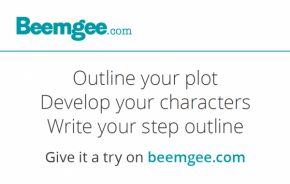Kick-off Events
Narrative consists of successive events.
One recognizable convention from film is what we might call the kick-off event. It is the opening scene, the very first item in the narrative. This is not to be confused with the inciting incident.
We’ll refer to the kick-off event as the initial scene, and whatever the medium – page, stage, or screen – it ought to capture the audience’s or reader’s attention.
The kick-off event can be drawn from virtually anywhere in the event chronology – like a “capsule” of plot pulled out from the narrative (more on that below). It may open up some questions to arouse our curiosity, or tell us something about a major character that will become relevant much later. It can throw the audience or reader, the recipient of the story, in medias res, straight into the middle of an exciting event. Or it can build up slowly to set the scene and establish a mood.
This first event might be part of a self-enclosed sequence of events that tell a complete little mini-story as a sort of prelude to the greater story (Raiders Of The Lost Ark). Sometimes the kick-off may be deliberately confusing, in order to arouse curiosity (Close Encounters Of The Third Kind). Film editor Walter Murch might call this a “convergent opening”, where many different people and settings are introduced in a deliberately confusing sequence of scenes, initially without explanations of how they all fit together. Only as the story progresses and the plotlines of these settings and characters “converge” does the audience figure out the significance of the scenes that at first seemed to make little sense. “Divergent openings”, on the other hand, introduce all the main players in the first scene. From here they each set forth on their own storylines. The wedding that opens The Godfather is a prime example of this technique. Murch also points out that the opening scenes set up audience expectations for point of view.
Sometimes a kick-off may explain a lot, impart a great deal of knowledge that the recipient will need in order to understand what follows (Zootopia). Thus it can be used to supply some backstory – but only if the event is strong enough to hook the audience. The kick-off may introduce the main character, but it certainly does not have to. The one thing the kick-off must do is capture our attention.
Screenwriter William Goldman points out that movies and novels have a little more “time” for the kick-off than TV shows. The danger of the viewer switching channels is greater than of the reader deciding on another book, or a cinema-goer leaving the auditorium, so TV shows need faster attention-grabbers. He also suggests that it is a good idea for an author to put a moment into the kick-off scene that will make the audience feel for the protagonist. Just some little quirk or action that helps the character appear as a person that we will want to accompany through the course of the story.
Artful kick-offs might contain hints about the premise or even the ending of the story, for instance in a crime mystery a clue to who the murderer is. The reader or viewer may not notice this kind of subtle pointer until the second reading or viewing, and the effect then can be particularly satisfying.
Click to open our free web-tool:

The kick-off event does not have to be as grand as the opening battle scene of Gladiator or Trinity running across the roofs in Matrix. But a kick-off should make you want to read on or keep on watching.
Novels and plays do not necessarily require spectacle to draw in the audience. Nonetheless, it may be a good idea to start your story with a bang. That is, with something surprising.
Playing with the order of events
An ancient plot device is to make the kick-off event consist of a spoiler, giving away the end of the story. At the beginning of the Odyssey, it is made quite clear that Odysseus will make it home to Ithaka. The classics know that tension does not stem from the desire to find out what happens next, but the desire to know how and why it happened.
A related but different device is to initially show characters in a particular and perhaps extreme situation, in medias res, causing the audience to wonder how and why they got there. At a cliffhanger moment, the story flashes back to the real beginning of the plot. You get to know the ordinary world of the protagonist and see all the sequence of events that led up to the initial situation. It is slightly different from a narrative frame (á la James Cameron’s Titanic), in that the bulk of the story is not embedded in a past that is distinct from the time level of the narrative frame. Rather, this trick shows a capsule of plot from near the end of the story right at the beginning, so the story then catches up with itself. The device has two important dramaturgical strongpoints:
- It gives the story drive, providing the audience with a sense of ‘goal‘. The reason for the audience to go through the story journey is to reach that point at which we started. This can be particularly useful if the story is such that the characters themselves do not exhibit strong wants or goals – instead the audience feels those two important story elements themselves.
- By the time the audience reaches that point, it has all but forgotten the initial scene. Such a kick-off therefore sets up a key scene near the end. When the audience recognises they have arrived at a point the already know, and now have the answer to the riddle of how and why that situation came about, the effect is that of revelation. It is a strong ‘aha’ moment, a ‘the penny drops’ moment. And such a moment is arguably the most important point in any story, what any story should build up to, and the one the author should design their plot to reach.
See also our post on Beginning and Inciting.
Image by Markus Spiske from Pixabay
Related function in the Beemgee story development tool:
Plot Outliner


